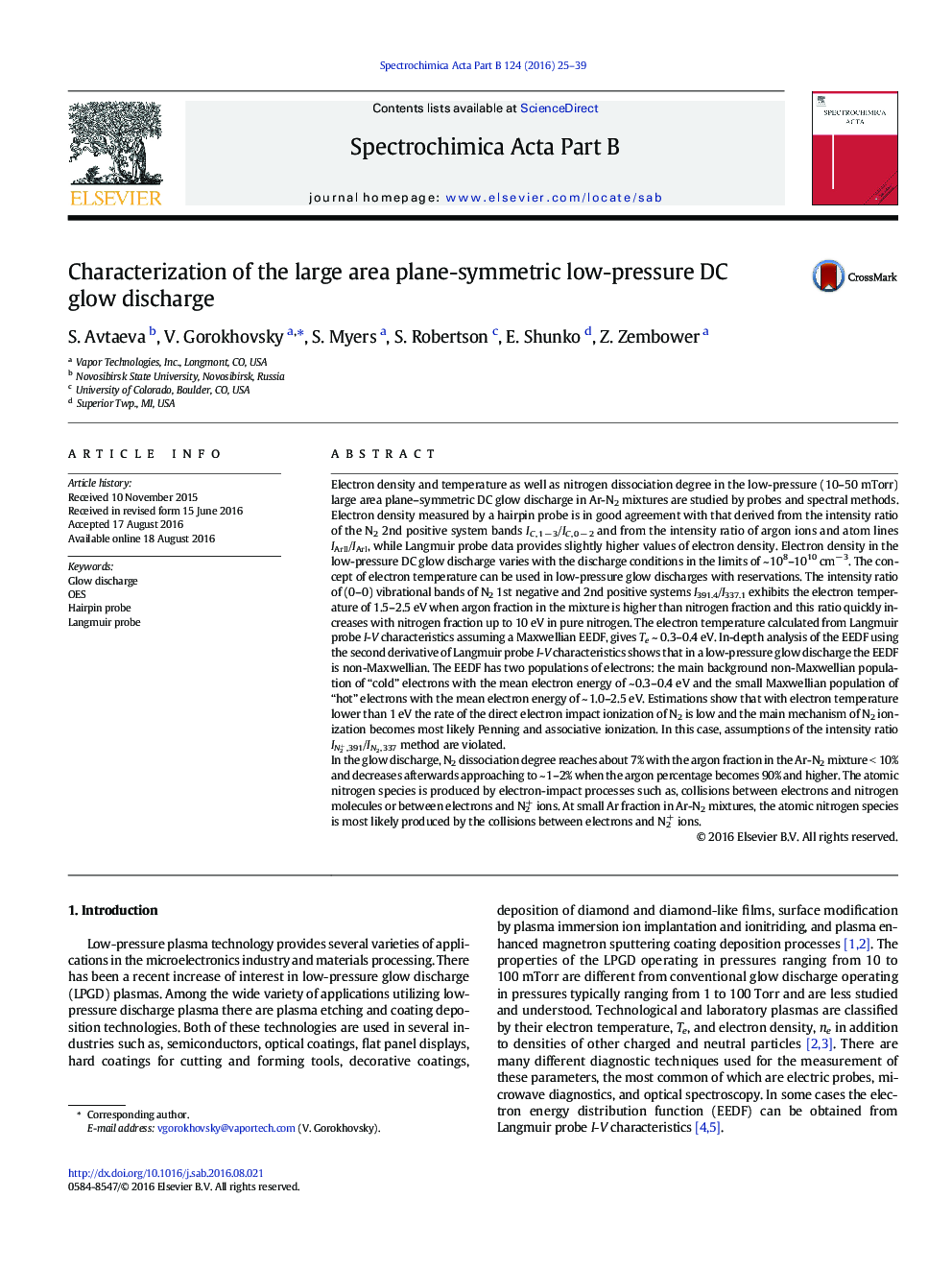| Article ID | Journal | Published Year | Pages | File Type |
|---|---|---|---|---|
| 1239413 | Spectrochimica Acta Part B: Atomic Spectroscopy | 2016 | 15 Pages |
•The probes and OES characterization methods were applied to obtain reliable information regarding discharge parameters.•The data collected by OES reveal the weak ArI, ArII and NI lines and N2 and N2+ bands.•Intensities of the lines and bands strongly depend on discharge conditions.•Electron density measured by the hairpin probe is in good agreement with OES diagnostics.•Data from Langmuir probe analysis provide slightly higher electron density compared to hairpin probe and OES.•The analysis of Langmuir probe characteristics reveals two groups of electrons in the discharge.
Electron density and temperature as well as nitrogen dissociation degree in the low-pressure (10–50 mTorr) large area plane–symmetric DC glow discharge in Ar-N2 mixtures are studied by probes and spectral methods. Electron density measured by a hairpin probe is in good agreement with that derived from the intensity ratio of the N2 2nd positive system bands IC , 1 − 3/IC , 0 − 2 and from the intensity ratio of argon ions and atom lines IArII/IArI, while Langmuir probe data provides slightly higher values of electron density. Electron density in the low-pressure DC glow discharge varies with the discharge conditions in the limits of ~ 108–1010 cm− 3. The concept of electron temperature can be used in low-pressure glow discharges with reservations. The intensity ratio of (0–0) vibrational bands of N2 1st negative and 2nd positive systems I391.4/I337.1 exhibits the electron temperature of 1.5–2.5 eV when argon fraction in the mixture is higher than nitrogen fraction and this ratio quickly increases with nitrogen fraction up to 10 eV in pure nitrogen. The electron temperature calculated from Langmuir probe I-V characteristics assuming a Maxwellian EEDF, gives Te ~ 0.3–0.4 eV. In-depth analysis of the EEDF using the second derivative of Langmuir probe I-V characteristics shows that in a low-pressure glow discharge the EEDF is non-Maxwellian. The EEDF has two populations of electrons: the main background non-Maxwellian population of “cold” electrons with the mean electron energy of ~ 0.3–0.4 eV and the small Maxwellian population of “hot” electrons with the mean electron energy of ~ 1.0–2.5 eV. Estimations show that with electron temperature lower than 1 eV the rate of the direct electron impact ionization of N2 is low and the main mechanism of N2 ionization becomes most likely Penning and associative ionization. In this case, assumptions of the intensity ratio IN2+ , 391/IN2 , 337 method are violated.In the glow discharge, N2 dissociation degree reaches about 7% with the argon fraction in the Ar-N2 mixture < 10% and decreases afterwards approaching to ~ 1–2% when the argon percentage becomes 90% and higher. The atomic nitrogen species is produced by electron-impact processes such as, collisions between electrons and nitrogen molecules or between electrons and N2+ ions. At small Ar fraction in Ar-N2 mixtures, the atomic nitrogen species is most likely produced by the collisions between electrons and N2+ ions.
